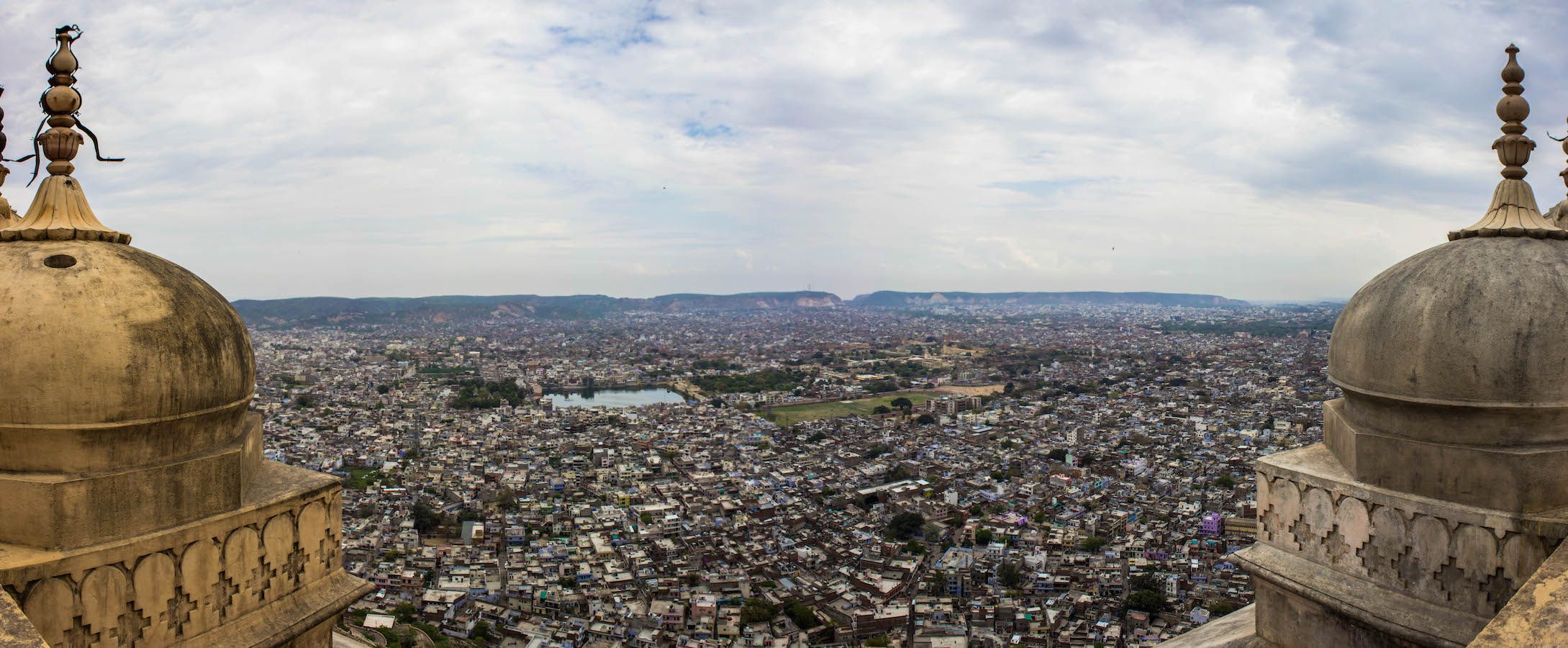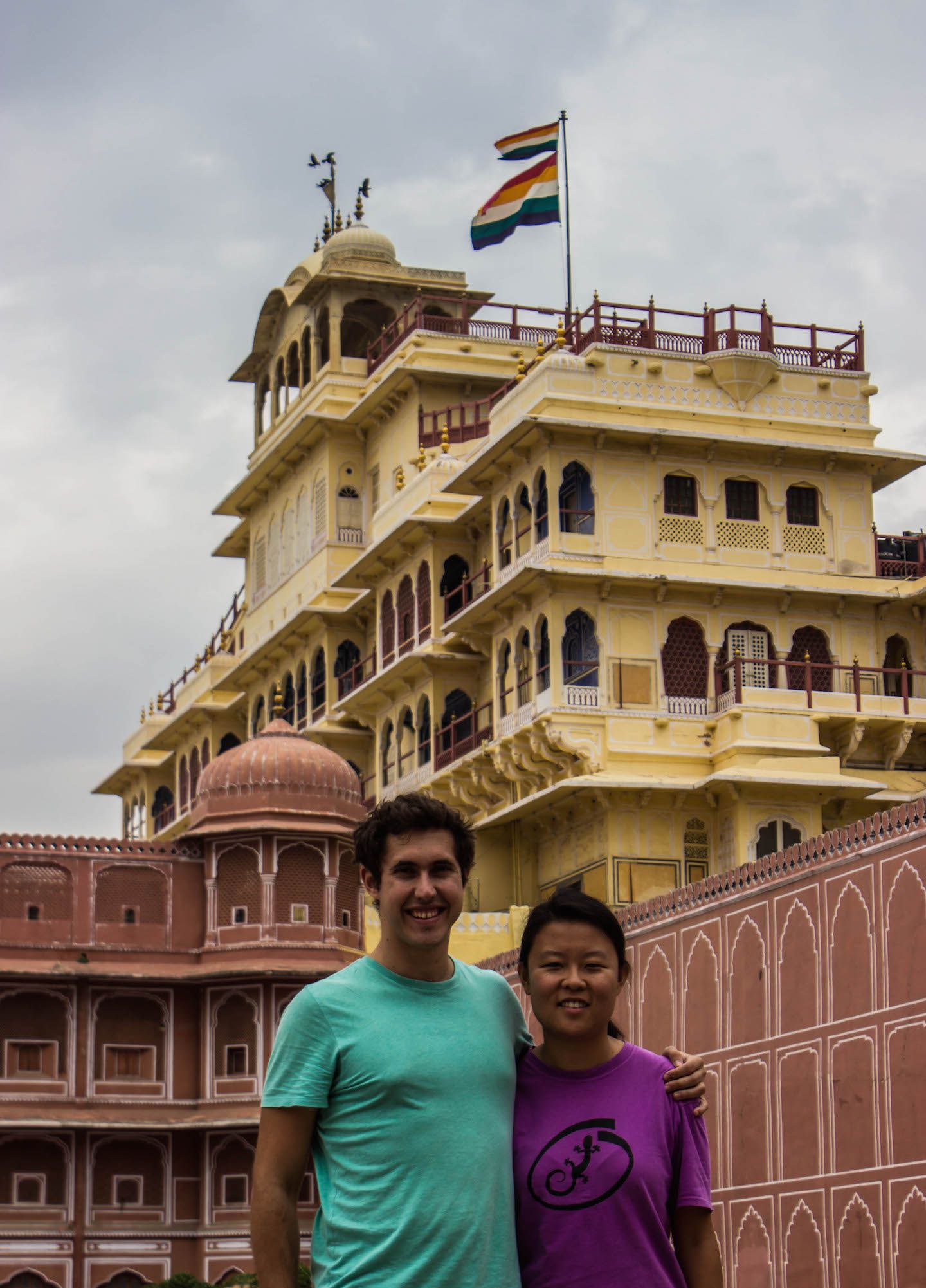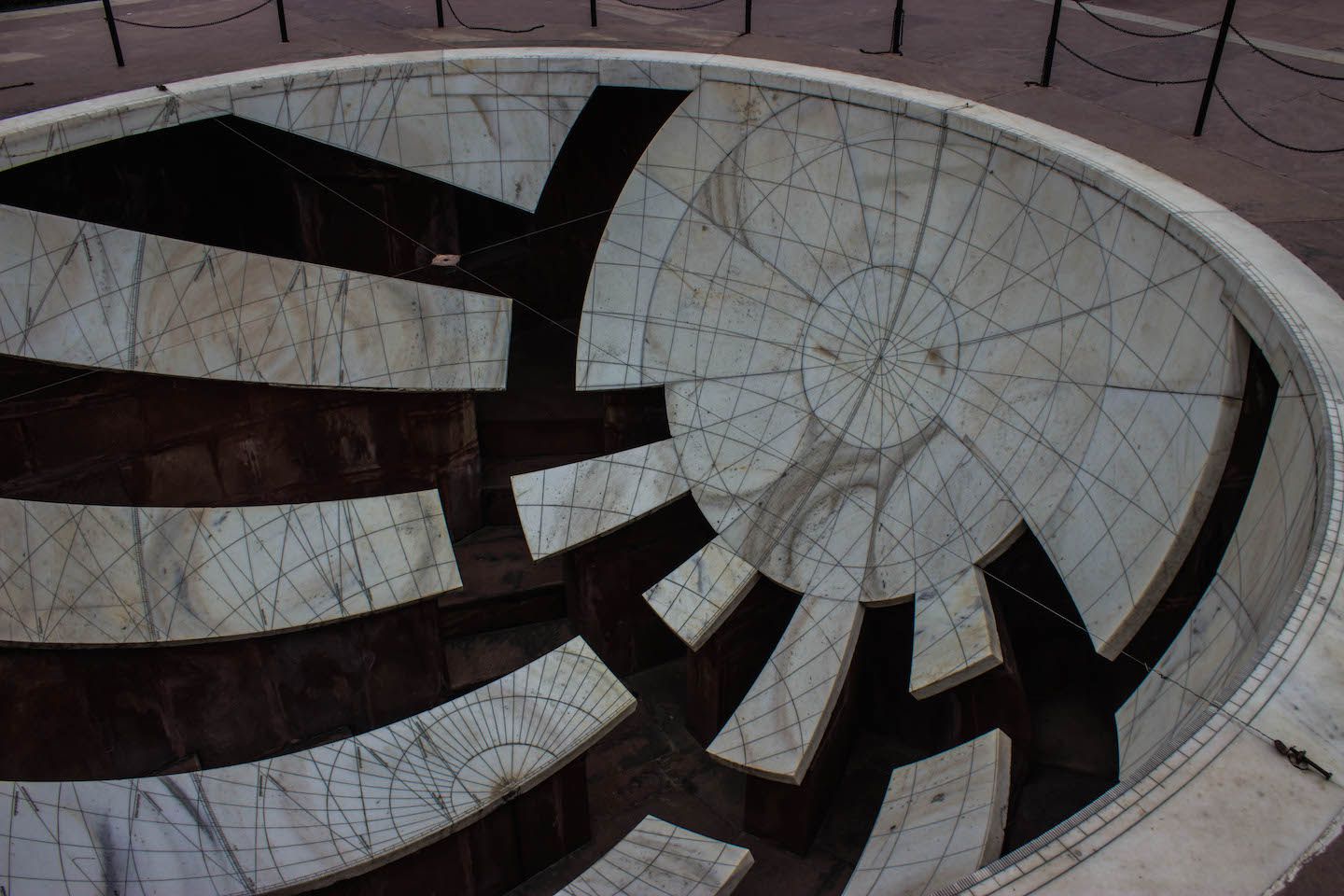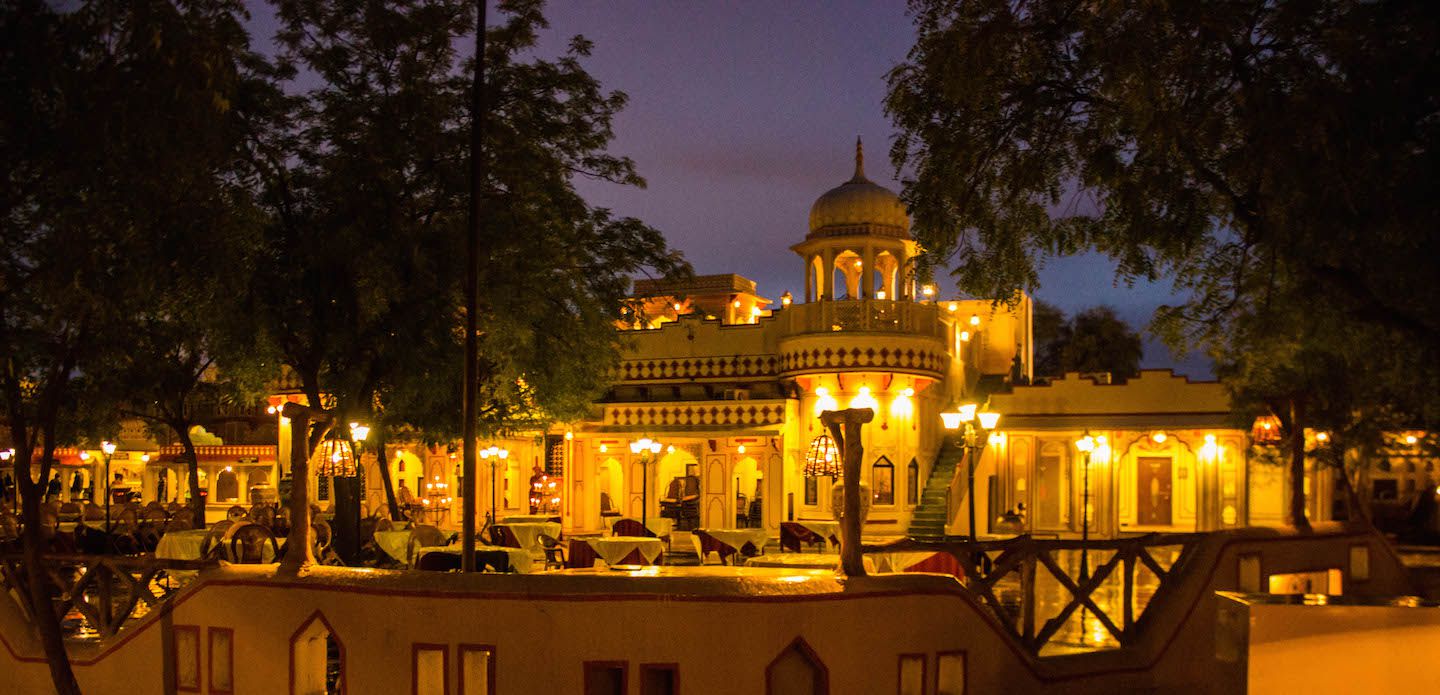Rajasthan is a favourite amongst tourists, Indians and foreigners alike. The largest state in India by area, Rajasthan has a rich history and culture, as well as natural beauty. Our journey through Rajasthan began in its capital, the “pink city” of Jaipur. We were also incredibly fortunate to have a family friend from the area, who was kind enough to arrange friends and family in Jaipur to take us around. We could not have asked for a better introduction.

For the many landmarks in and around Jaipur, we went with a Rajasthan Tourism Development Center (RTDC) full-day tour that included transportation and guide to all the famous sights. It was not the best tour – rescheduled to a different day, long stops at souvenir shops, and literal drive-bys for some attractions. But we knew that going in and had the right expectations in mind. All we really needed was a means of transportation between the places, which the RTDC tour was by far the most economical choice. We made the best of the situation.
Amer Fort and Jaigarh Fort
Amer Fort is the most famous tourist attraction in the Jaipur area and deservedly so. Overlooking Maota Lake, Amer Fort was large and imposing from the outside, but quite pretty and cozy on the inside. Built high on a hill like most forts in Rajasthan, Amer Fort (also known as Amer Palace) was home to the Rajput Maharajas.

There were too many memorable parts of the palace to count. The Sun Gate led into the main courtyard, and through the Ganesh Gate was the private palaces of the royal family. A Mirror Palace was embellished with mirrors and coloured foils that shined and glittered in the light. There were beautiful gardens of geometric patterns in a similar style to the many Mughal gardens we’ve seen both within the palace and in the middle of the lake. The palace was decorated throughout with flower frescos, glass and marble inlays, and alabaster reliefs.

Walking through the fort was an adventure, like a maze of passageways, corridors, stairwells, lookout points, etc. There were always multiple entrance points to get to any particular place and multiple ways to get out. I could imagine being a little kid running around the fort everyday learning its layout by heart. Forts can get boring pretty quickly, but we had fun finding our own path around Amer Fort.

A subterraneous tunnel connects Amer Fort all the way to nearby Jaigarh Fort, meant as a possible escape route for the royal family. The most memorable part of Jaigarh Fort was its cannon, known as the Jaivana. In 1720 at the time it was manufactured, it was the world’s largest cannon on wheels.

Nahargarh Fort
Another defense fort for the city, Nahargarh Fort offered the best views of Jaipur. It was here that we saw how big Jaipur was, as the city with its endless buildings spread out as far as the eye could see. I have to admit it wasn’t as “pink” as I thought it would be. However, a city view from above is always impressive.

We loved the roof terrace at Nahargarh Fort. It’s rare to be at the top of a structure that’s designed in such an open manner. It was like seeing a floorplan of sorts for the fort. Many open terraces and courtyards filled the area, with narrow corridors and rooms lined around them. Upper level terraces and courtyards often had a hole in the middle that let light into the lower courtyard, covered by a metal mesh.

Jaipur City Palace
Built by the Maharajas of Jaipur as the seat of the kingdom, the Jaipur City Palace had, in my opinion, the prettiest buildings in the whole city. Into the gate, the first building you see is the exquisite Mubarak Mahal. Originally a reception center, it now houses a museum of royal textiles. But the inside pales in comparison to the lovely architecture on the outside, a fusion of Rajput, Islamic, and European styles.

However, it’s the Chandra Mahal that takes home the best prize. A seven-storey building, it towered over the rest and was undoubtedly the commanding face of the entire palace complex. Most of the building was closed off to the public, but a glance of the outside and the courtyard was enough to imagine how finely ornamented the inside must be.

My favourite were the four gates in the courtyard, each decorated with a different season and Hindu god with intricate motifs such as peacocks and flowers. They were gorgeous.

There were the usual private and public audience halls with arched chambers, typical of all the forts we’ve visited so far. The private one in the Jaipur City Palace has two huge sterling silver vessels, the world’s largest. They were supposedly used to carry water from the Ganges during one very religious king’s visit to England. We also visited an armoury and art gallery, both filled with artifacts worth a brief walk through.

Jantar Mantar
A collection of astronomical instruments made of masonry, stone, and brass built to observe and measure astronomical positions with the naked eye, Jantar Mantar brought out our inner geeks. We are both fascinated by science, and this was what science was like here in the 1700s. A total of nineteen different instruments filled the area, ranging from predicting eclipses, to tracking stars, to measuring time.

Jantar Mantar is home to the world’s largest stone sundial. Using the shadow from the sun, it was capable of measuring time in 2 second intervals. That’s pretty impressive for more than 300 years ago. That was how we felt about all the instruments. While primitive compared to the technologies available today, they were simple but nonetheless effective. In some ways, these required a better appreciation for science than just pressing a button that spits out a number.

All of the instruments were pretty big in scale, with the largest sundial at 27m tall. It felt a bit like walking around at a giant’s playground – a smart, astronomy-inclined giant. At places like this, I am reminded of the curious and innovative spirit of humans. A never-ending curiosity to discover and understand the world around us, as well as the creativity and ingenuity to use tools to help us do so. It’s amazing that even back then, people were already capable of learning so much about the skies.

Chohki Dhani, Jaipur
The perfect way to end our stay in Jaipur was a visit to Chohki Dhani, a village resort. The phrase literally means a quintessential village, or in other words, a place where one can experience the roots of the local culture and traditions, with modern amenities. It was like being transported into Indian village of the past to get a taste of how people lived back then.

It was here that we spent a few hours immersed in the real Rajasthani culture of old, from the village setting to the performers and artisans to the food. We watched traditional folk dances with swords and towers balanced on the dancers’ heads. We walked through little huts where villagers demonstrated how daily tasks were performed in the old days. We feasted on a Rajasthani thali set with five different chapattis. It was like a museum, an amusement park, and a culture show all rolled into one resort experience.

Besides the landmarks mentioned above, the tour stopped at a few other places. Laxminarayan Temple had beautiful stained glass windows, but of Indian art, which was interesting. Hawa Mahal, Jal Mahal, and the Albert Museum were all drive-bys (such is the realities of a tour bus), though we wished we could have visited them in person. Jaipur was a big city, but we felt like we saw the main attractions, and we certainly got a good sense of India in Rajasthan.
For more pictures from Jaipur, please visit the gallery!

